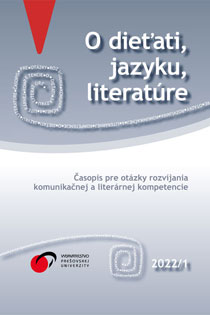Producing expository texts in preschool: recording hypotheses and observations concerning materials’ properties
Producing expository texts in preschool: recording hypotheses and observations concerning materials’ properties
Author(s): Ainat GubermanSubject(s): Psycholinguistics, Preschool education, Pedagogy
Published by: Vydavateľstvo Prešovskej univerzity v Prešove
Keywords: early childhood education; expository writing; emergent literacy; writing instruction; active learning;
Summary/Abstract: Expository texts are aligned with logical and scientific ways of thinking (Bruner, 1986). They are prevalent in the academic world and the educational system. This study explores preschool children’s production of expository texts: why they produce them, and what resources they choose to convey meaning. The participants were Israeli, low SES, 4-6 year-old preschool children and their teacher. The teacher documented text production events. She described the context that led to the production, transcribed the children’s comments, photographed the texts and added explanations to ambiguous representations. Text analysis included identifying genre markers (Coutinho & Miranda, 2009), nonverbal representations and text layout (Kress & van Leeuwen, 2006). The children produced two genres of texts: two tables and a bar graph. The tables recorded hypotheses and observations related to the flotation and absorbency of objects. The bar graph compared the degree of absorbency of objects. In all three texts, the children used icons instead of written words, but adhered to conventions related to layout and nonverbal representation. The study shows that children can produce and interpret expository texts during relevant, hands-on activities. Nonverbal graphic representations enrich children’s text-producing resources, and may help them gradually grasp and appropriate expository text genres.
Journal: O dieťati, jazyku, literatúre
- Issue Year: X/2022
- Issue No: 1
- Page Range: 8-19
- Page Count: 12
- Language: English

